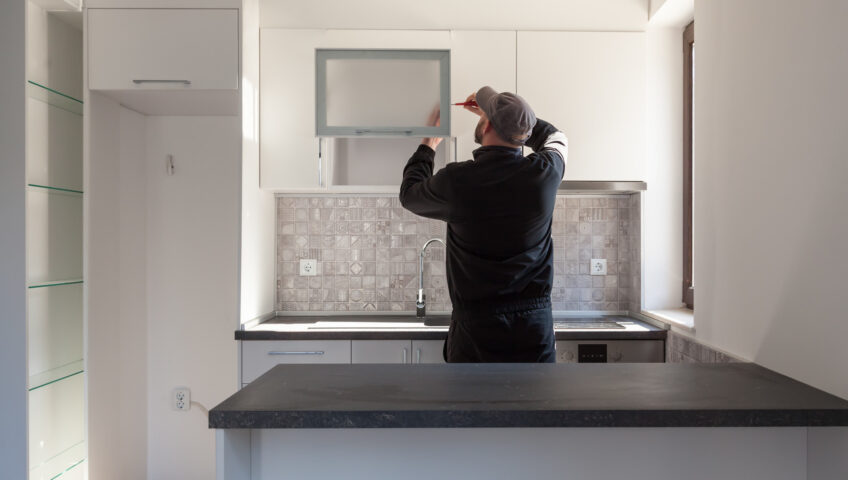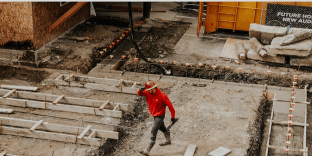
Let’s Flip Out!: 10 Insider Tips for Flipping Houses
Profit margins on home flipping have fallen lately, with the average return on investment hovering around 25 percent. While not every home flipping trend looks so negative, those lower margins make it important to get every advantage you can.
If you’re new to the process of flipping a house, you’ll need a hand. The process has some complications you won’t see on television, and getting the most out of a flip takes time and effort.
Keep reading to learn some of our best tips for flipping houses. We’ve consulted some of the best house-flipping contractors out there to build a list of strong strategies.
1. Inspect, Inspect, Inspect
If you think you’ve taken a close enough look at the house, you probably haven’t taken a close enough look at the house. Inspections don’t do as much damage to your wallet as unexpected repairs.
Get a professional to look the house over before you buy it. Get a professional to look the house over after the work is done. Get a professional to…
… well, you get the idea. Getting an inspection before the purchase will be essential in setting your budget and expectations for a flip.
Any house-flipping contractors you hire over the course of the project will adhere to the maxim, “measure twice, cut once.” You should think that way, too.
2. Know Your Location
What types of people live in the area your prospective house occupies? What attracts people to the neighborhood? What downsides does the neighborhood have?
If the housing market looks stagnant in the area, with homes sitting unsold for months, look at why. Has the neighborhood become less safe? Did a major employer move offices to another region?
If you can’t answer questions like those, you can’t sell the house to others. If you want to flip a home for profits, you need to think like a salesperson. Do your market research before embarking on a flip.
3. Set Reasonable Expectations
As the cost of building materials rises and the housing market shifts, turning a profit on a flipped house gets harder. Some houses sell at a loss, and sitting on the market for a long time increases the chance of such a result.
Your first flip won’t be a wild success that doubles your money. The typical result comes in at more like 25%. Don’t hesitate to dream, but keep your dreams reasonable or they’ll swallow you whole.
An ill-thought-out house flipping can turn into a long, expensive misadventure. Once you have that information on your location and the house, make sure your expectations match that data.
4. Never Overpay
Once you have all that information and a sense of what kind of timeline and investment will bear fruit, make sure you stick to it. Avoid overpaying for a house.
If you get the house at a reasonable price, a lot of other things can take unexpected turns and still work out. If you overpay by 10 percent, on the other hand, your margins will end up razor-thin.
Would you take on unnecessary risks or pay too much for a home you wanted to live in? Would you leap at a job opportunity that seemed sketchy to you? House flipping as a business has some similarities to both, so don’t take those risks while flipping either.
5. Connect With Others
If you don’t enjoy talking to other people, house flipping won’t work out for you. Not only do you need to spend time talking to contractors, but you also need to start networking with buyers, financers, real estate agents, and other stakeholders. The process of flipping a house involves a lot of people with competing needs and desires.
Knowing a potential buyer can speed up the flipping process. If you keep track of people who would be interested in your house, you can sometimes sell as soon as you complete renovations.
Other house flippers can also help you get familiar with the process. Offering a potential mentor a cut from your first successful sale can help with their motivation.
6. Know Your Limits
Knowing your limits will help you in any endeavor, but when it comes to house flipping, you need to know what you can and can’t accomplish with your DIY skills. A shoddy DIY job will lower the value of your project on the market and can even end up costing you more if you end up hiring a contractor anyway.
If you are considering starting a repair job without the help of trained professionals, ask yourself whether you would do the job for a neighbor. If you don’t have that level of confidence in your skills, pick up a phone and not a hammer.
Overconfidence can make any project a financial drain. Remember, a seemingly easy task can become a lengthy struggle if done haphazardly.
7. Don’t Make Too Many Improvements
When dealing with a house that feels like a blank slate, you’ll often feel the temptation to invest in trendy light fixtures or high-end window treatments. If the house is in an area where that’s within expectations for the market, that’s fine, but try to avoid over-improving the house.
The people who buy the house will likely have their own preferences and sense of style. When they see your overdesigned kitchen setup, they’ll think about how much that must be driving the price up. Remember that when you’re flipping a house, you’ve chosen to connect someone else with a property.
8. Improve Curb Appeal
Working on the home’s interior can take over the whole project, but remember that a buyer’s first impression of the home goes a long way. A 2020 study indicated that an attractive exterior increased the sale price of a home by 7% or more. If you’re flipping a house, that’s a lot of return on investment for simple improvements.
The slower the real estate market moves in an area, the more curb appeal affects the sale price of the home. If market trends in your area show signs of slow, irregular sales patterns, consider spending that time making improvements to the exterior of the house instead of the interior if you have to make a choice.
9. Shore Up Site Security
This slips a lot of house flippers’ minds, especially on their first few projects. Depending on your process, you may leave valuable tools or personal items in the house. Even if insurance covers your tools, you’ll still lose time and effort if a break-in occurs.
Change the locks when you start the process. Make sure to lock both doors and windows when you leave each night. In some neighborhoods, a doorbell camera might help as well.
During some processes, such as wall removal, you may not have the chance to secure the site. If that’s the case, make sure not to leave any valuables behind.
10. Read More Tips For Flipping Houses
This might sound like a circular conversation, but the best thing you can do for yourself if you want to flip a home is to keep an open mind. Don’t assume that you know everything. These tips will serve as a great start, but if you stay hungry for new knowledge, you’ll do better in the long run.
House flipping mistakes can happen at any time, and sometimes things that used to work well stop working. If you don’t use any of the other tips on this list, remember to stick to this one. Developing your knowledge over time will help more than treating this article like a one-and-done reading.
Catch You on the Flip Side
Keep our tips for flipping houses in mind the next time you start on a project. With the current state of the housing market and the cost of building materials, you need to keep tips like these in mind if you want to get the most out of your investment.
If you need services like a kitchen remodel or wall removal as part of your flip, give us a call. We can give you a rough estimate within 48 hours.


